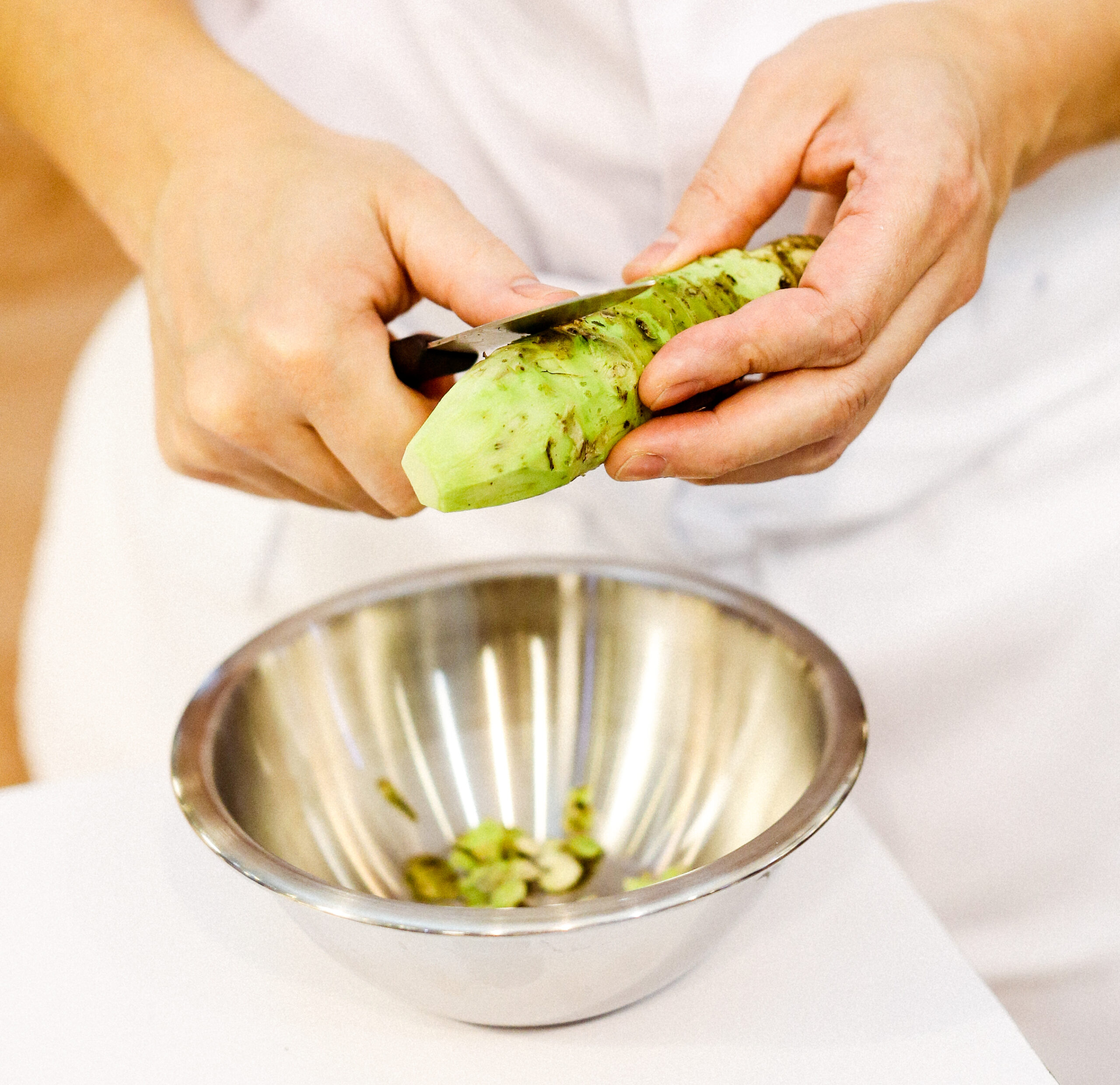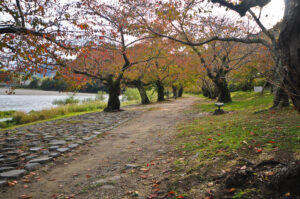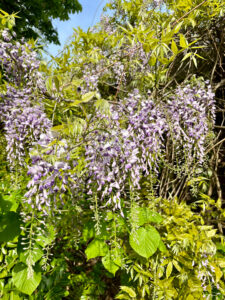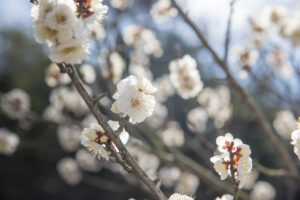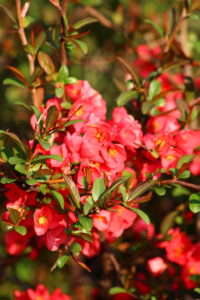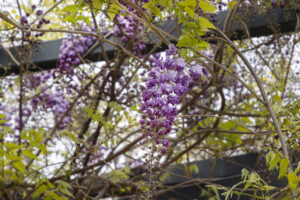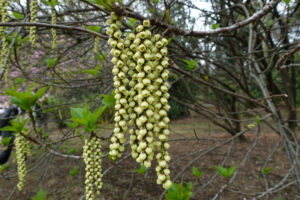Wasabi, often relegated to the role of a spicy condiment for sushi, is increasingly recognized as a culinary gem that commands a unique position in gourmet cuisine. Despite its popularity, cultivating wasabi presents a myriad of challenges that can deter even the most seasoned farmers. This article delves into the hurdles faced by those who aspire to grow this exotic plant, examining the specific conditions required for success and the intricate balance between nature and nurture that is essential for wasabi cultivation.
The Elusive Allure of Wasabi: A Culinary Staple
Wasabi has long been celebrated not just for its sharp, pungent flavor, but also for its numerous culinary applications. Found predominantly in Japanese cuisine, it has become a staple in sushi restaurants worldwide. Chefs and food enthusiasts alike seek out authentic wasabi for its complex taste that surpasses the typical green paste made from horseradish and food coloring. This allure has piqued interest among farmers, spurring a quest for its cultivation beyond its native Japan.
However, the artisanal nature of wasabi production adds a layer of mystique to its allure. Unlike common vegetables, wasabi is not produced in bulk, which drives up its market value. The scarcity of genuine wasabi has led to increased demand and a premium price tag, making it an attractive prospect for farmers willing to invest in its cultivation. Yet, the promise of profit is often overshadowed by the formidable challenges that come with growing this finicky plant.
Understanding the culinary significance of wasabi is essential for appreciating the efforts behind its cultivation. Its unique flavor profile, often described as both hot and fragrant, enhances the dining experience, offering a complexity that captivates the palate. For many, wasabi represents not just a condiment but a cultural experience, linking modern dining to traditional practices. This rich heritage only adds to the pressure on growers to deliver high-quality produce, further complicating the cultivation process.
As farmers venture into wasabi cultivation, they often find themselves navigating a landscape that is as rewarding as it is daunting. The enchanting journey from seed to plate involves a mix of art and science, where the grower’s expertise directly influences the final product. However, the road is fraught with challenges that demand a deep commitment, both financially and emotionally.
Ultimately, the allure of wasabi is inextricably linked to its production challenges. For those with a passion for agricultural pursuits, the quest to cultivate wasabi is both an adventure and a test of resilience. The stories of growers who have succeeded in bringing this coveted plant to life serve as inspiration, while also spotlighting the myriad challenges that come with it.
With the background set, it is crucial to delve deeper into understanding what makes wasabi cultivation so intricate.
Understanding Wasabi: More Than Just a Sushi Accompaniment
Wasabi, scientifically known as Wasabia japonica, is a perennial plant native to Japan. It belongs to the Brassicaceae family, which also includes vegetables like mustard and horseradish. However, despite these familial ties, wasabi has gained a reputation for its distinctive flavor and health benefits that set it apart from its relatives. Rich in antioxidants and possessing antibacterial properties, wasabi is not just a flavorful addition to meals but a health-conscious choice for many.
The traditional use of wasabi extends beyond sushi; it has found its way into various dishes, including sashimi, marinades, and even contemporary fusion recipes. This versatility has prompted chefs to elevate wasabi’s status on the culinary stage, leading to a renaissance in its appreciation. However, the growing interest in authentic wasabi has exposed a significant gap between supply and demand, further complicating its cultivation.
While many consumers may be familiar with the vivid green paste served alongside sushi, few realize that true wasabi is a delicate root that requires careful handling and preparation. The freshly grated wasabi root offers a pungency and flavor profile that is vastly superior to its imitation counterpart. This distinction emphasizes the importance of understanding the plant itself, as well as the specific conditions necessary for its successful growth.
Moreover, the growing interest in wasabi has sparked a wave of curiosity about its cultivation techniques. As more farmers explore the potential of wasabi farming, they must familiarize themselves with the plant’s unique growth habits and environmental needs. This understanding is essential not only for achieving successful yields but also for preserving the integrity of the product.
As the culinary world continues to embrace this distinctive ingredient, the challenges of cultivating wasabi become increasingly apparent. Farmers must educate themselves on the best practices for growing wasabi and remain adaptable to the evolving market demands. The journey to cultivate wasabi is not solely about growing a crop; it is about maintaining a connection to the rich culinary traditions that it represents.
In a world where the culinary landscape is ever-changing, the importance of traditional ingredients like wasabi cannot be underestimated. This understanding leads to a deeper appreciation of the unique growing conditions required for this plant, which we will explore next.
The Unique Growing Conditions Required for Wasabi
Wasabi is a plant that thrives under specific conditions, making its cultivation a complex endeavor. Unlike many crops that can adapt to a range of environments, wasabi requires a very particular climate and soil composition to flourish. This specificity is one of the primary reasons why wasabi farming has remained a niche practice, often limited to regions that can replicate its ideal growing conditions.
One of the most critical factors in wasabi cultivation is temperature. Wasabi prefers cooler climates, ideally between 45°F to 70°F (7°C to 21°C). This temperature range is essential for promoting healthy growth and flavor development. High temperatures can lead to bolting, where the plant prematurely flowers and goes to seed, resulting in a bitter taste. Farmers must therefore take care to provide a controlled environment, often utilizing shaded areas or greenhouses to maintain optimal temperatures.
Furthermore, the humidity level also plays a significant role in wasabi cultivation. This plant thrives in moist conditions, which mimics its natural habitat along riverbanks and in shaded forests. Adequate moisture not only supports growth but also helps prevent diseases that can arise from dry conditions. Farmers must be vigilant in monitoring humidity levels, especially in drier climates, to ensure that their crops remain healthy and vibrant.
Light exposure is another vital consideration in wasabi farming. The plant naturally grows in the understory of forests, meaning it prefers indirect sunlight rather than direct exposure. Too much sunlight can cause stress to the plant, leading to poor growth and suboptimal flavor. Growers often utilize shade cloths or plant their crops in locations that receive filtered light to provide an environment that closely resembles the plant’s native habitat.
Ultimately, the unique growing conditions required for wasabi can feel like a double-edged sword. While the precise requirements offer the potential for high-quality produce, they also serve as a barrier to entry for many aspiring growers. This specificity necessitates a commitment to understanding the nuances of the plant’s needs, which can be daunting for those new to farming.
As we examine the specific environmental challenges faced by wasabi farmers, we come closer to understanding the delicate balance required for successful cultivation.
Climate Challenges: Finding the Perfect Environment
The climate in which wasabi is cultivated plays a crucial role in determining the success of a farmer’s efforts. As mentioned earlier, wasabi thrives in cooler temperatures, but finding a location that maintains these conditions year-round can be a significant challenge. Many regions that experience fluctuating temperatures, especially those that swing dramatically between seasons, can jeopardize the delicate growth cycle of this plant.
In regions where summer temperatures soar, wasabi may struggle to survive. Farmers must be proactive in their approach to mitigate the effects of excessive heat. This might involve implementing irrigation systems that provide consistent moisture while also creating shaded areas to protect the plants from direct sunlight. However, the balance must be carefully calibrated; too much moisture can lead to root rot, a condition that can devastate a wasabi crop.
Conversely, areas with harsh winters may pose their own challenges. While wasabi is cold-tolerant, extreme frost and prolonged freezing temperatures can damage the plant. Farmers in colder climates often resort to using insulation techniques, such as mulching or creating greenhouses, to shield their crops from the cold. The added investment in infrastructure can be financially burdensome, particularly for those just starting in wasabi cultivation.
Climate change further complicates the scenario. As global temperatures rise and weather patterns become increasingly erratic, farmers face an uphill battle in adapting to these changes. Prolonged droughts, unexpected frost, or unseasonably warm spells can threaten the delicate balance required for wasabi growth. Farmers are finding themselves needing to innovate and adapt their practices to remain viable in this shifting landscape.
In conclusion, the climate challenges of wasabi cultivation are profound and multifaceted. Farmers must navigate a complex web of environmental factors to maintain the delicate equilibrium that allows wasabi to thrive. The stakes are high, and the margin for error is slim, making the decision to cultivate this plant a substantial gamble.
Next, we will turn our attention to one of the most crucial yet often overlooked elements in wasabi farming: water quality.
Water Quality: The Hidden Variable in Wasabi Cultivation
Water quality is a pivotal factor in the successful cultivation of wasabi. As a plant that thrives in wet, humid environments, the type of water used for irrigation can directly impact growth, flavor, and overall health. Farmers must carefully consider not only the quantity of water but also its quality to ensure optimal conditions for their wasabi crops.
The ideal water for wasabi cultivation is clean, cold, and mineral-rich, ideally sourced from spring water or mountain streams. This is because wasabi plants are particularly sensitive to contaminants and pollutants that can inhibit their growth and diminish their flavor. Water that is too warm or contains high levels of chlorine or other chemicals can stress the plants, leading to poor yields and a compromised product.
Sediment in water can also pose challenges. Wasabi roots are delicate, and excessive sediment can lead to mechanical damage or introduce pathogens that can cause diseases. Farmers must employ effective filtration systems to ensure that the water they use for irrigation is clear and free from harmful particles. This added layer of complexity requires an understanding of water management practices that may be unfamiliar to those new to agriculture.
Moreover, the pH level of water is another essential consideration. Wasabi plants flourish in slightly acidic to neutral pH levels, ideally around 6.0 to 7.5. Water that falls outside this range can impede nutrient absorption, affecting the plant’s overall health and flavor. Regular testing of water quality is necessary, and adjustments may be required to maintain the ideal conditions for growth.
The challenges surrounding water quality can be overwhelming for farmers, particularly those who may not have access to pristine water sources. As a result, some growers have turned to innovative solutions, such as rainwater harvesting or aquaponics systems, to provide their crops with the ideal water conditions. These sustainable practices not only improve water quality but also offer eco-friendly alternatives to traditional irrigation methods.
Ultimately, the hidden variable of water quality underscores the intricate web of factors impacting wasabi cultivation. Farmers must be diligent and knowledgeable about their water sources, as neglecting this component can result in dire consequences for their crops.
In the next segment, we will explore the soil requirements that create the foundation for successful wasabi growth.
Soil Requirements: The Foundation of Successful Growth
Soil composition is another critical aspect of wasabi cultivation, providing the foundation upon which healthy plants can thrive. Wasabi requires a specific type of soil that supports proper drainage while retaining sufficient moisture to accommodate the plant’s needs. Sandy loam or silty soil, rich in organic matter, is often considered ideal for growing wasabi.
The nutrient content of the soil directly affects the health and flavor profile of wasabi. A well-balanced soil that is high in organic content can significantly enhance the growth rate and overall quality of the roots. Farmers often incorporate compost or well-rotted manure to enrich the soil, providing a steady supply of essential nutrients as the wasabi plants mature.
However, the challenge lies in achieving this ideal soil composition. Many regions may lack the necessary soil characteristics for wasabi cultivation, requiring growers to amend their soil through various agricultural practices. This can involve significant effort and investment, particularly for those starting from scratch.
Soil drainage is another vital consideration. While wasabi requires moist conditions, overly saturated soil can lead to root rot, a common affliction that can devastate an entire crop. Farmers must implement strategies, such as raised beds or proper irrigation systems, to ensure that water does not accumulate around the roots, thereby promoting healthy growth.
Regular soil testing is essential for monitoring nutrient levels and pH balance. By conducting soil tests, farmers can identify any deficiencies and adjust their practices accordingly. This proactive approach allows for targeted interventions, ensuring that the plants receive the exact nutrients they need throughout their growth cycle.
In conclusion, the soil requirements for wasabi cultivation are specific and demanding. Farmers must invest time and resources to create the optimal soil environment, addressing drainage, nutrient content, and moisture levels. Without a solid foundation, the potential for high-quality wasabi production diminishes significantly, underscoring the importance of soil management in this complex endeavor.
Next, we will address the challenges associated with pest management that can threaten wasabi crops.
Pest Management: Battling Nature’s Uninvited Guests
As with any agricultural endeavor, wasabi cultivation is not immune to the challenges posed by pests. In fact, the delicate nature of the wasabi plant can make it particularly susceptible to various insects and diseases. Effective pest management strategies are essential for safeguarding the crops and ensuring a successful yield.
Common pests that threaten wasabi crops include aphids, spider mites, and root maggots. These pests can cause significant damage by feeding on the plant’s leaves and roots, resulting in stunted growth and diminished flavor. Farmers must remain vigilant in monitoring their plants for any signs of infestation, as early intervention can be key to limiting damage.
One of the primary challenges of pest management in wasabi cultivation is the limited use of chemical pesticides. Many growers opt for organic farming practices to produce high-quality, authentic wasabi, which often leads to a reliance on natural pest control methods. While these methods can be effective, they also require constant vigilance and a deep understanding of the ecosystem in which the wasabi operates.
Companion planting is one natural strategy that some farmers employ to deter pests. By planting certain herbs and flowers alongside wasabi, growers can create a more balanced ecosystem that attracts beneficial insects while repelling harmful ones. This method not only helps to manage pests but can also enhance the overall health of the soil and the plants themselves.
Integrated pest management (IPM) is another approach that involves a combination of monitoring, prevention, and control strategies. This comprehensive method considers the life cycle of pests and emphasizes a balanced approach to pest control, minimizing environmental impact while maximizing crop protection. Farmers who implement IPM practices often report healthier plants and reduced pest-related issues over time.
However, despite the best efforts, pest management in wasabi cultivation remains a constant challenge. The delicate balance between fostering a thriving ecosystem and protecting crops from pests often feels like an uphill battle. The need for ongoing education, observation, and adaptability in pest management practices is crucial for those dedicated to producing high-quality wasabi.
As we consider the time factor in wasabi cultivation, it becomes increasingly clear that growing this unique plant requires patience and dedication.
The Time Factor: Patience is Key in Cultivating Wasabi
Cultivating wasabi is a long-term commitment that demands patience from growers. Unlike many crops that can yield results in a matter of weeks or months, wasabi typically requires 18 to 24 months to reach maturity. This extended growth period can be a source of frustration for farmers, particularly in a market that often favors quicker returns.
The lengthy maturation process is partly due to the plant’s natural growth cycle. Wasabi grows slowly, developing its roots and leaves over time. While some farmers may be tempted to rush the process in pursuit of profits, doing so can compromise the quality of the final product. Rushing growth often leads to smaller, less flavorful roots that fail to meet market expectations.
Additionally, the environmental factors influencing wasabi growth—such as temperature, humidity, and water quality—can further lengthen the time to harvest. Variations in these conditions can delay maturity, and farmers must be prepared to adapt their practices accordingly. This often involves ongoing monitoring and adjustments to ensure that the plants receive the optimal conditions for growth.
The prolonged cultivation period also impacts the financial considerations surrounding wasabi farming. Farmers must manage their resources carefully, as the costs associated with maintaining crops over two years can accumulate quickly. This includes expenses related to water, soil amendments, pest control, and labor. As a result, growers must be strategic in their approach, balancing the immediate costs with potential future profits.
For many farmers, the wait for wasabi to mature is not just a test of patience but also a reflection of their commitment to quality. The reward for their diligence comes in the form of a premium product that commands higher prices in the market. Growers who prioritize quality over speed often find success in establishing a loyal customer base that appreciates the authenticity of their wasabi.
In conclusion, the time factor in wasabi cultivation is a double-edged sword. While the lengthy growth period can be a source of frustration, it also provides an opportunity for farmers to cultivate a superior product. Patience and dedication are essential virtues for those who embark on this challenging agricultural journey.
Next, we will examine the economic realities of wasabi farming, weighing the costs against the potential market value.
Economic Realities: Cost vs. Market Value of Wasabi
The economic landscape of wasabi farming is a complex one, marked by a juxtaposition of high costs and potential market value. The allure of cultivating a premium product is enticing, but aspiring farmers must carefully evaluate the financial implications before committing to this niche industry.
To begin with, the costs associated with wasabi cultivation can be significant. From soil amendments to pest management practices, farmers must invest in numerous inputs to create a suitable environment for growing wasabi. Additionally, the infrastructure needed to maintain the ideal growing conditions—such as irrigation systems, greenhouses, or shaded areas—requires substantial upfront investment.
Moreover, the lengthy cultivation period can strain finances, as farmers may have to wait up to two years before seeing any return on their investment. During this time, ongoing expenses accumulate without the benefit of immediate revenue. This aspect can be particularly challenging for small-scale farmers or those new to agriculture, who may struggle to manage cash flow during the growing process.
On the other side of the equation lies the potential for high market value. Authentic wasabi is a sought-after ingredient in gourmet cuisine, commanding premium prices in both local and international markets. Chefs and restaurants are increasingly willing to pay top dollar for high-quality wasabi, recognizing its flavor and health benefits. This demand creates an opportunity for growers who can navigate the challenges of producing authentic wasabi.
However, the market is not without its pitfalls. A significant portion of the wasabi available on the market is often substituted with horseradish-based products, leading to confusion among consumers. This reality can make it difficult for farmers to establish a brand that stands out in a crowded marketplace. Growers must invest in marketing and education efforts to inform consumers about the unique qualities of true wasabi, thus justifying the higher price point.
Ultimately, the economic realities of wasabi farming require a careful balancing act. Farmers must consider the costs associated with cultivation against the potential market value of their product. Those willing to invest the time, resources, and effort may find themselves rewarded with a premium product that resonates with discerning consumers. However, the journey is fraught with risks, and success is by no means guaranteed.
As we explore the role of expertise in successful wasabi farming, the importance of knowledge and experience in navigating these economic challenges becomes increasingly clear.
The Role of Expertise: Knowledge is Crucial in Farming
Expertise plays a pivotal role in the successful cultivation of wasabi, and it extends beyond
